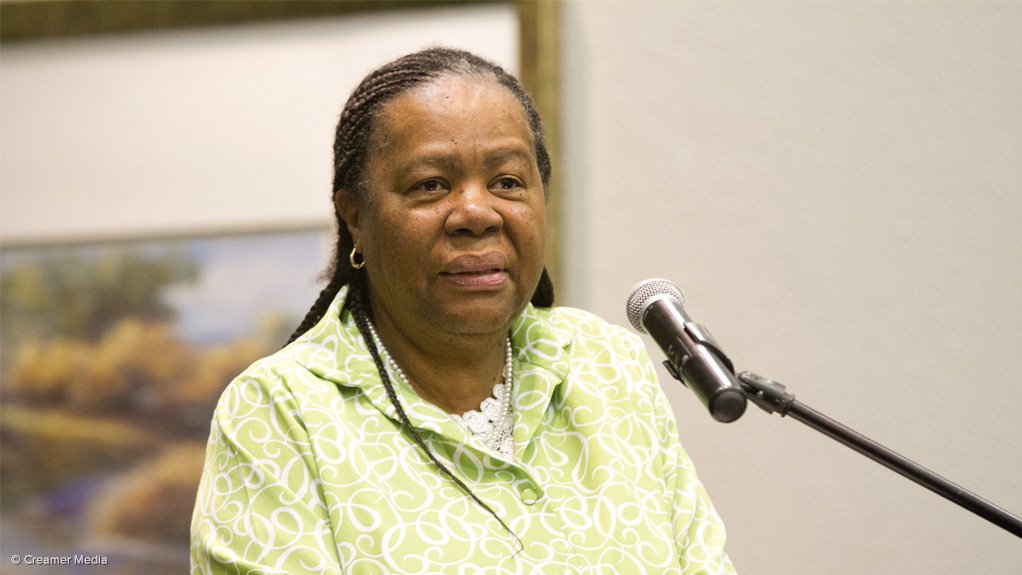Dr Albert van Jaarsveld, the CEO of the NRF;
Dr Beverly Damonse, Group Executive of the NRF;
Dr Jabulani Nukeri, Managing Director of SAASTA;
Mr Graham Briggs, the Chief Executive Officer (CEO) of Harmony Gold Mining Company;
learners, the wealth creators of the future
school principals and educators, who are their midwives
Good evening to you all and welcome.
I’m delighted to be here this evening.
The Olympiad stimulates interest in science among young people. It encourages young people to become scientists and so in a very real sense the Olympiad shapes lives. You can read about previous Olympiad winners in a book launched here this evening.
The Olympiad draws participants from beyond our borders. A special word of welcome to you.
It’s remarkable to note that this is the 50th year of the Olympiad. It’s remarkable enough on its own, but the Olympiad is much more than a science and biology exam competition. It’s the jewel in the crown of our Youth into Science strategy, which is all about identifying and nurturing talent. The Olympiad also identifies talent. It identifies talent that teachers have nurtured in schools across the length and breadth of the country.
There's much to be proud of in South African science. We boast a long list of impressive inventions - from early tools for collecting, cutting up and storing food, to traditional medicines, horse-drawn vehicles, medical apparatus, attack helicopters, vuvuzela horns and articulated dump trucks. We are particularly renowned for breakthroughs in the medical field, which include heart transplant procedure and the development of the Computer Axial Tomography (CAT), which led to breakthroughs in X-ray scanning.
Many South African inventors have produced products that improve the quality of life of rural people in South Africa and elsewhere in Africa. Examples include the EEZE Bicycle-Powered Water Pump, Hippo Drum and Q Drum, the Lifeline Self-Powered Radio, the Turbo-Spiral Solar Heater, the Suncatcher Solar Cooker, the Mobi-Morgue and the Solo-Mobile Water Heater. In some cases, charitable foundations have been established to ensure that these products reach the people who really need them.
I challenge winners and participants here this evening to lengthen the list of inventions for which South Africa is known.
A lesson that we have learnt through our innovation programmes is that invention is only a small part of innovation. Having a bright idea for something that is new, unique and useful is not enough. True innovators are people who have the courage and determination to take their idea to the market place. We have made a disproportionate contribution to technological innovation worldwide, considering our relatively small economy. Yet our recent surveys of innovation in South Africa have revealed that we are still highly dependent on foreign technology in many fields. We are building stronger partnerships within industry; higher education institutions and government to further develop our country’s technological innovation.
South African scientists have been able to exploit both geographic and knowledge advantages. We are internationally competitive and recognised in astronomy, we are one of the two countries that will host the Square Kilometre Array. As a country rich in human fossil remains, we are also a leading country in paleontology and related sciences. And then there are the health sciences. The University of Cape Town ranks in the top fifty life-sciences universities in the world. And I should add that our scientists are leading the charge towards finding a vaccine for HIV. These last five years have been remarkably encouraging, more specifically because we know now, first, that early ARV treatment prevents the transmission of the disease to partners (treatment is prevention) and, second, because the “patent pool”is filling up and this means that generic manufacturers will be able to provide drugs to sufferers cheaper than ever before.
We need to train more scientists. We are increasing our investment in research and development, and particularly investment in the renewal and modernisation of the infrastructure devoted to science and technology. We’ve research councils that are the envy of the world. The Council for Scientific and Industrial Research, Agricultural Research Council, the Medical Research Council, Council for Geosciences and MINTEK are ideal places to start your science careers.
In closing, I want to pay tribute to the team at SAASTA for their continued hard work.
Thanks to Harmony Gold for supporting the Olympiad. Teachers provide advice and support to students, we thank them for this invaluable support.
EMAIL THIS ARTICLE SAVE THIS ARTICLE
To subscribe email subscriptions@creamermedia.co.za or click here
To advertise email advertising@creamermedia.co.za or click here











